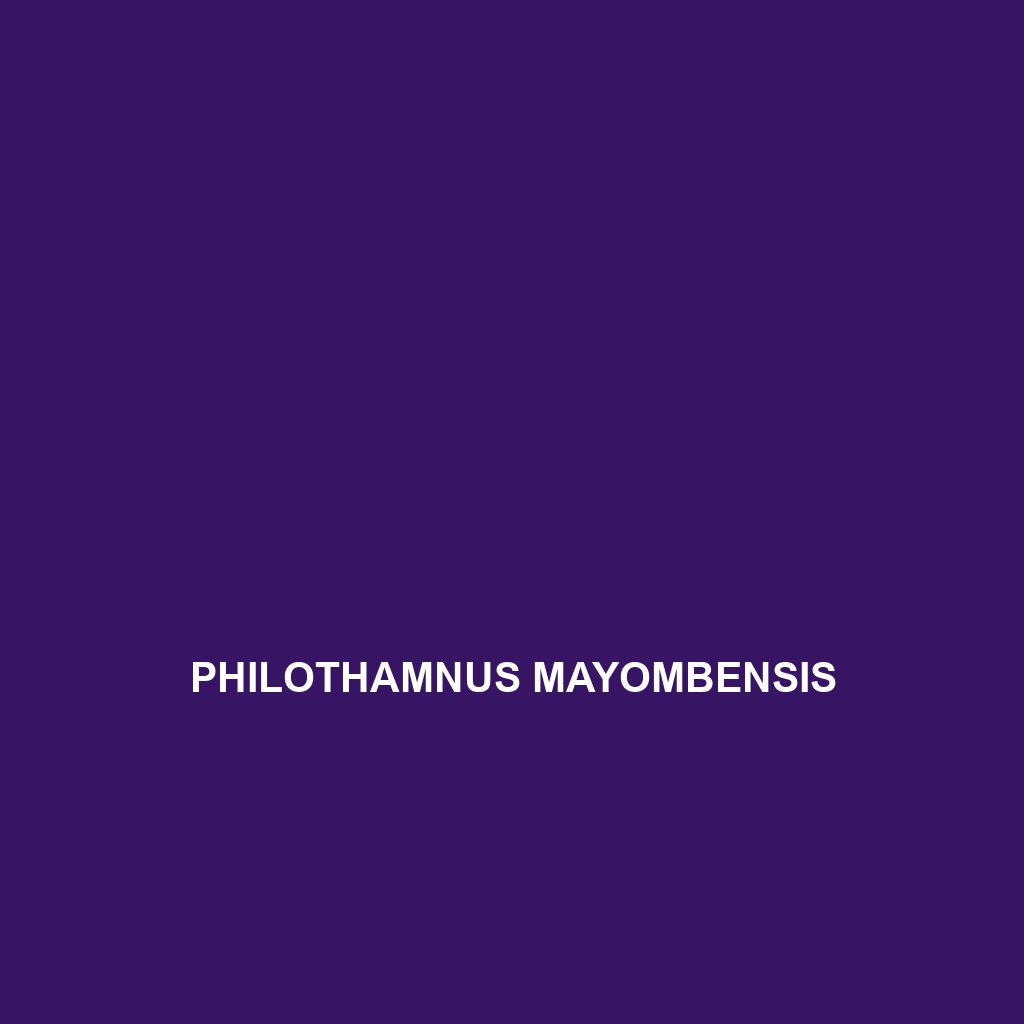Common Name
Philothamnus mayombensis
Scientific Name
Philothamnus mayombensis
Habitat
Philothamnus mayombensis, commonly known as the Mayombe green snake, is primarily found in the tropical rainforests of Central Africa, particularly in the Congo Basin region. Its habitat includes dense vegetation, characterized by a humid climate that supports a rich biodiversity. The species thrives in environments that offer plenty of foliage for shelter and hunting, making them well-adapted to the intricate layers of the rainforest. Additionally, small pockets of savannas adjacent to these forests may also host Philothamnus mayombensis, particularly in areas that experience seasonal rains. The lush greenery and the high humidity of rainforests provide the perfect conditions for this species to thrive.
Physical Characteristics
Philothamnus mayombensis is a strikingly beautiful snake, characterized by its slender body, which can grow up to 1.5 meters long. Its coloration is predominantly vibrant green, allowing it to blend seamlessly into its lush surroundings. This coloration serves not only for camouflage against predators but also aids in ambushing prey. The scales of the snake exhibit a glossy finish that reflects light, enhancing its visual appeal. Unique features of Philothamnus mayombensis include large, expressive eyes that are adapted for excellent vision in low-light conditions, an important trait for a primarily arboreal species.
Behavior
Philothamnus mayombensis exhibits primarily diurnal activity, meaning it is most active during the day. While it is mostly arboreal, it can also be found on the forest floor, particularly during the mating season or when hunting for prey. This species has an intriguing mating ritual, where males engage in elaborate courtship displays that involve a series of movements to attract females. Notably, they also exhibit a unique defence mechanism: when threatened, they may flatten their bodies and wiggle to escape predators, taking advantage of their surroundings to blend into the foliage. These behaviors not only enhance their survival but also assist in social interactions within their species.
Diet
Reproduction
The reproductive cycle of Philothamnus mayombensis typically occurs during the wetter months when food is abundant. Mating often takes place in treetops where both males and females engage in a series of intricate courtship movements. After mating, females lay a clutch of eggs, usually in secluded areas of vegetation to protect them from potential predators. The incubation period lasts about 60 to 80 days, during which the female may remain nearby to guard her eggs. Upon hatching, the young snakes are independent and must fend for themselves, a common trait among many snake species.
Conservation Status
Currently, the conservation status of Philothamnus mayombensis is classified as ‘Least Concern’ by the International Union for Conservation of Nature (IUCN). Despite this status, habitat loss due to deforestation and human encroachment poses a significant threat to this species. Conservation efforts are ongoing, targeting sustainable land-use practices to preserve both the rainforest habitats and the diverse species living within them. Education and awareness programs are critical in promoting the preservation of natural habitats that support Philothamnus mayombensis and other wildlife.
Interesting Facts
One interesting fact about Philothamnus mayombensis is its remarkable adaptability; they can often be found in a variety of arboreal environments, showcasing their versatile habitat preferences. Additionally, they have a unique method of locomotion, using their body to wrap around branches as they navigate the treetops, thus demonstrating their strong climbing abilities. Furthermore, their vibrant coloration not only serves as camouflage but may also play a role in communication among individuals of the species.
Role in Ecosystem
Philothamnus mayombensis plays a crucial role in its ecosystem as both a predator and prey. As a predator, it helps maintain the population of small vertebrates and insects, which in turn supports the overall health of the forest’s food web. Their presence indicates a healthy ecosystem, as their diet contributes to controlling pest populations. Additionally, as prey for larger predators such as birds of prey and larger snakes, Philothamnus mayombensis plays a vital part in the carbon cycle and contributes to the biodiversity of the rainforest environment. Sustaining healthy populations of this snake ensures the balanced functioning of its ecological community.
